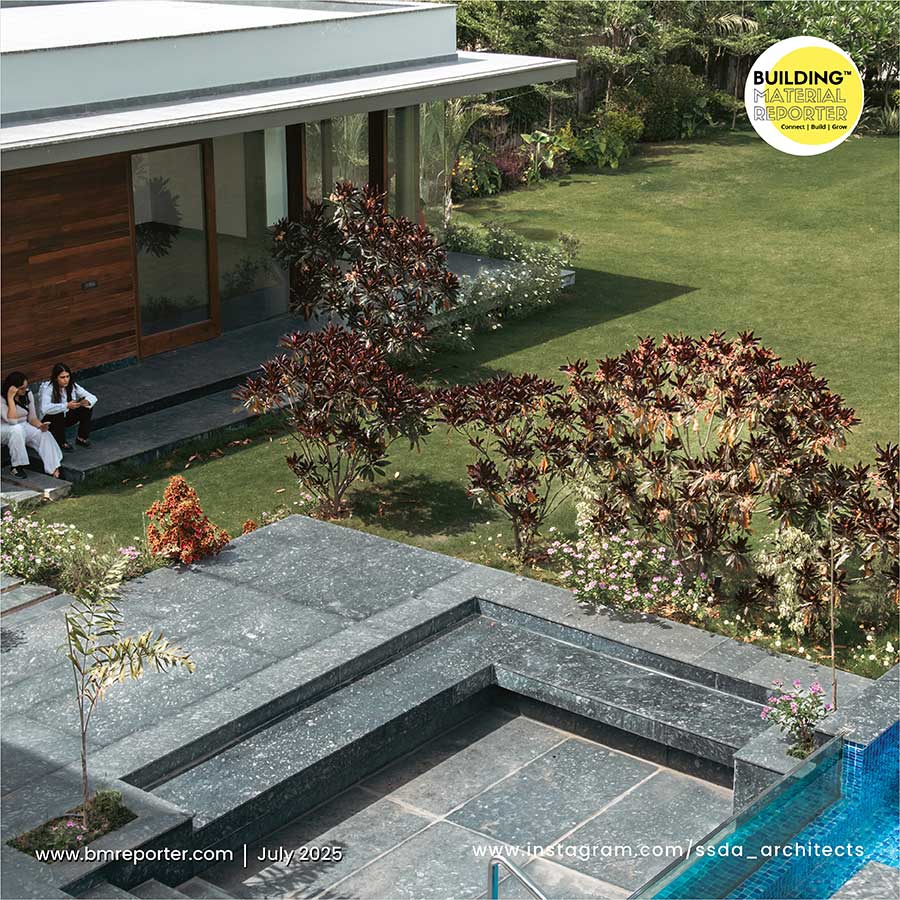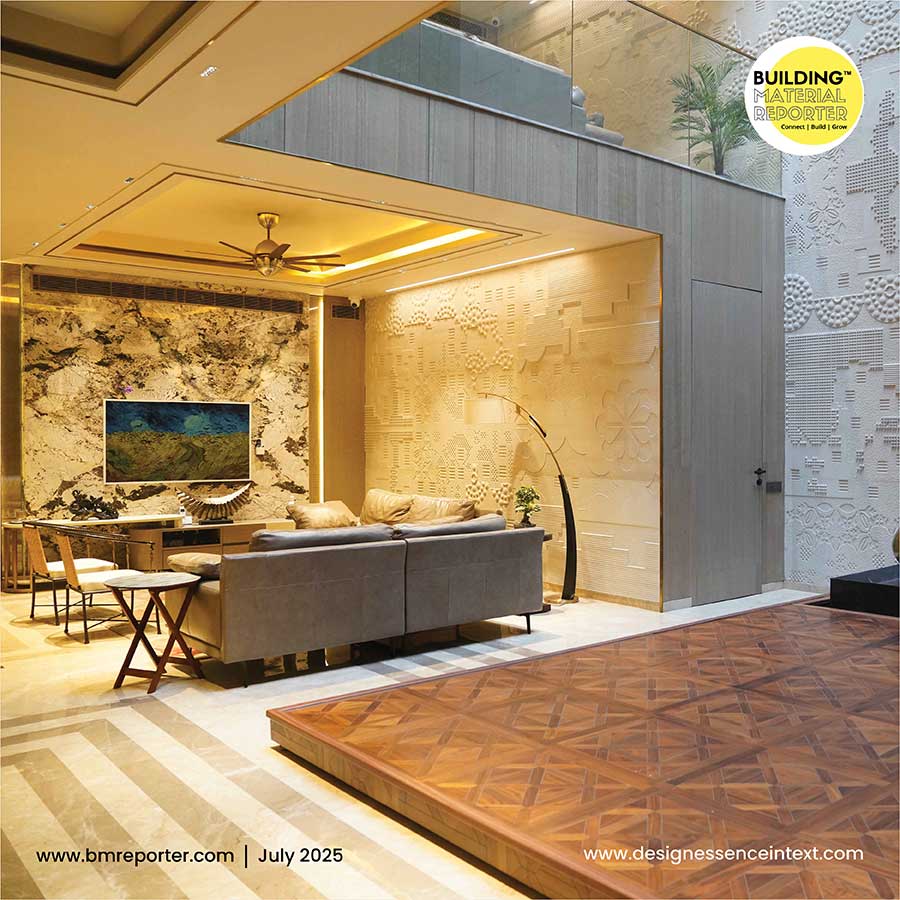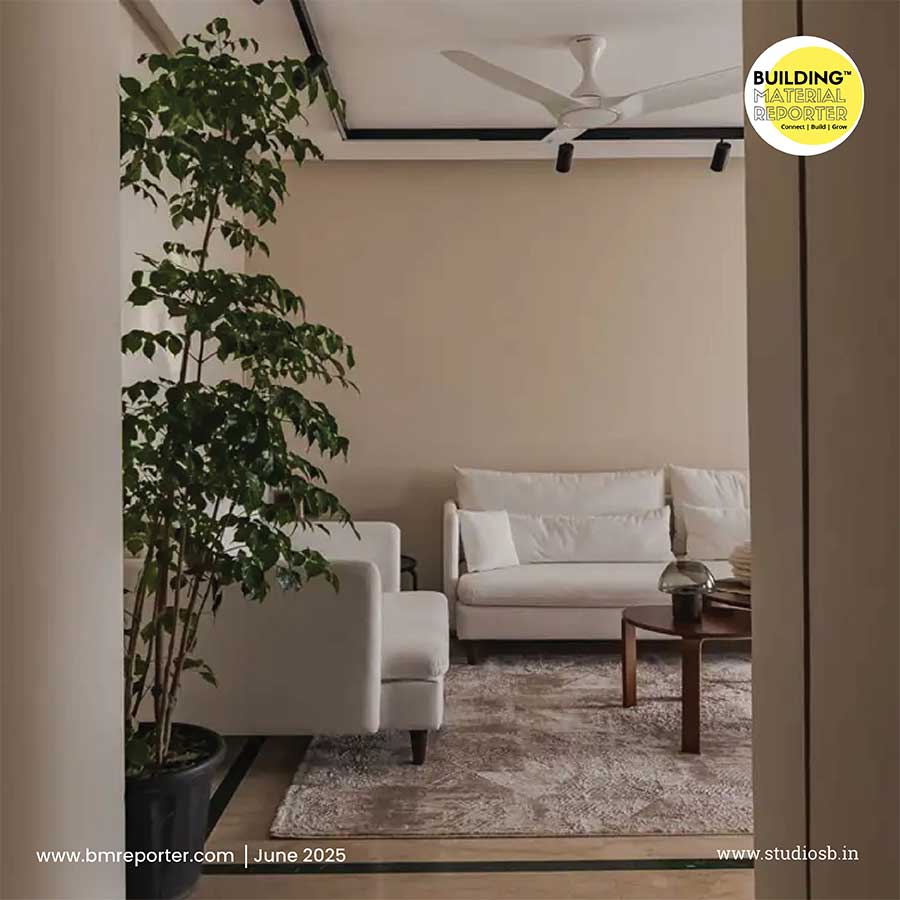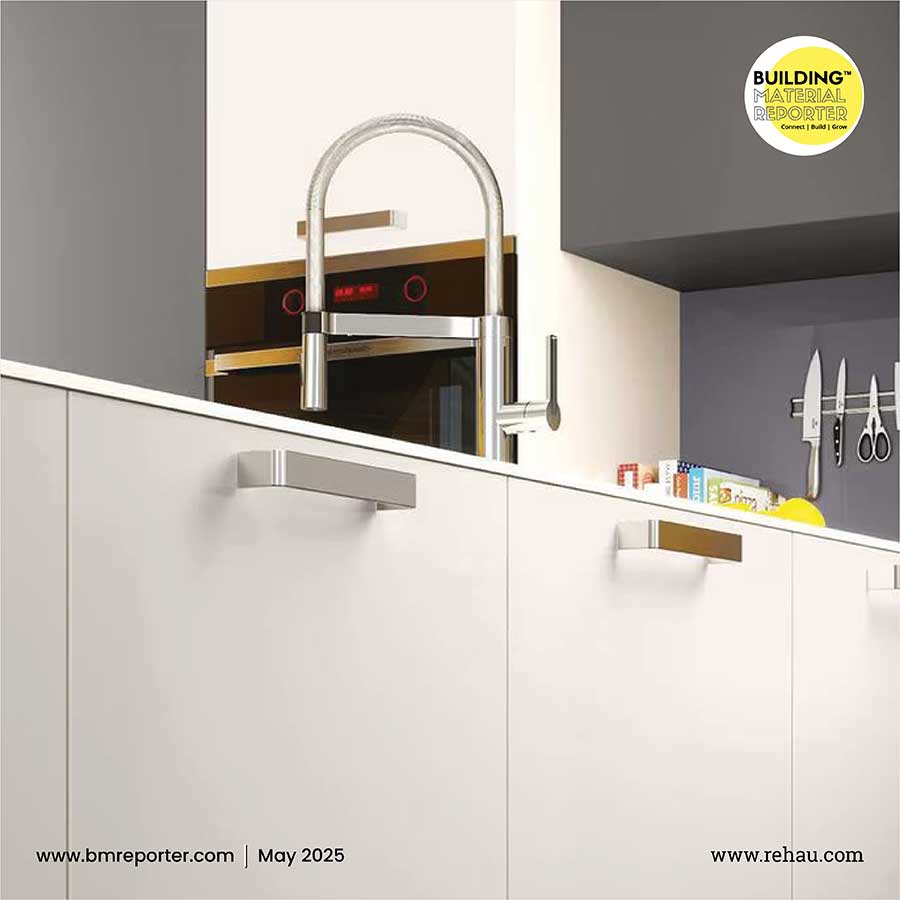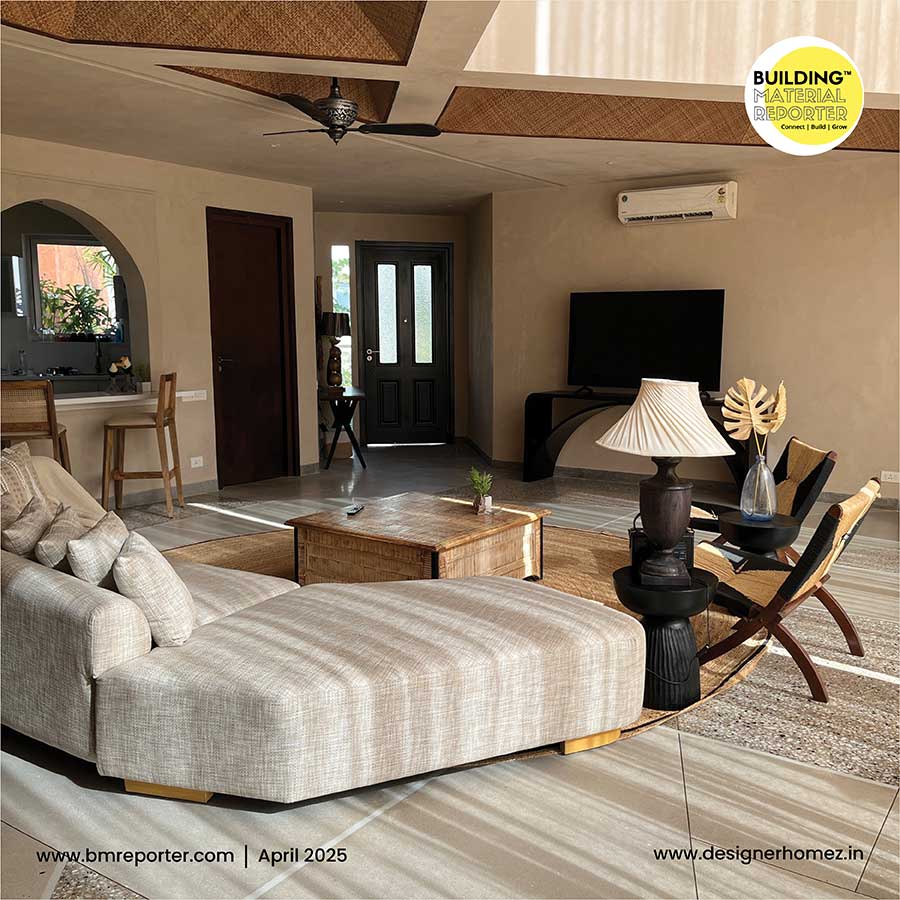The Art & Science of Structural Design: Key Concepts & Techniques
- November 26, 2024
- By: Yukti Kasera
- INFLUENCERS
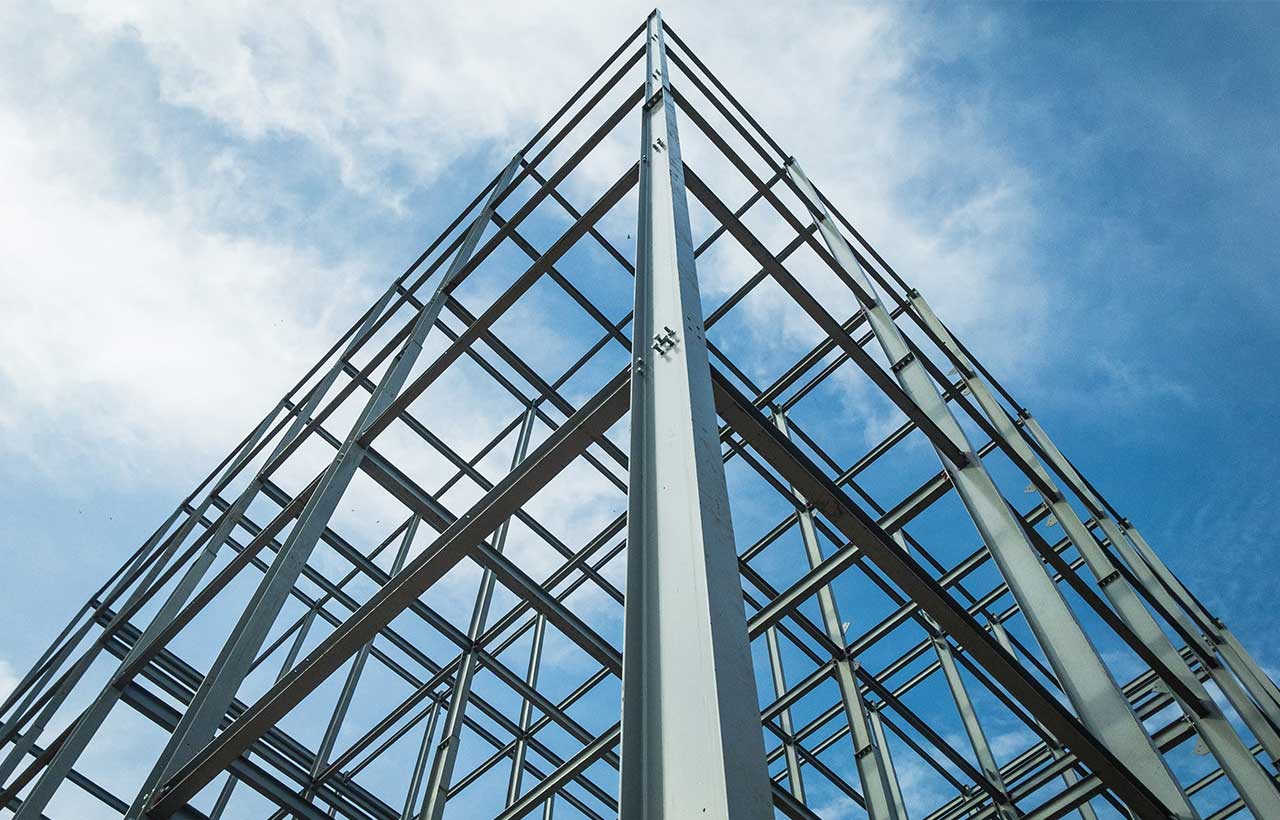 Structural design creates a building's skeleton or structure that can support loads while also taking into account safety, stability, and affordability. Structural design in building construction aims to ensure that the structure has a good lifespan and can withstand a wide range of pressures and weather conditions without failing. In this article by Building Material Reporter, let’s understand the importance of structural design deeply.
Structural design creates a building's skeleton or structure that can support loads while also taking into account safety, stability, and affordability. Structural design in building construction aims to ensure that the structure has a good lifespan and can withstand a wide range of pressures and weather conditions without failing. In this article by Building Material Reporter, let’s understand the importance of structural design deeply.
Fundamental Principles of Structural Design
The fundamental principles of structural design are key concepts that the people designing buildings, and other structures that are safe, and long-lasting. These principles are intended to ensure that the structure can survive a variety of loads, climatic conditions, and calamities. It involves balancing numerous concepts, such as strength, stability, durability, and serviceability, in order to create safe, cost-effective, and functioning buildings or infrastructure. Engineers must examine not only the physical forces at work, but also future needs, material performance, and environmental variables to guarantee that the structure functions well over its lifetime.
Introduction to Structural Design: Structural design highlights the design of structures such as buildings, towers, and other infrastructure. The purpose of this design is to make these structures functional, efficient and also sustainable. Steel, concrete, wood, and composite materials are selected depending on their strength, durability, and compatibility for the building. Materials define the designs which include factors like elasticity, tensile strength, and compressive strength. It involves a thorough understanding of the ability to forecast future demand, and a dedication to safety.
Load-Bearing Structures: Load-bearing structures are the foundation of every construction, keeping it stable and safe under a variety of stresses. Engineers can design buildings that support vertical loads as well as resist lateral forces and environmental conditions by strategically incorporating materials such as load-bearing walls, columns, beams, slabs, and foundations. Building height, load requirements, budget, and environmental circumstances all influence the materials and construction methods used. Each type of load-bearing structure has unique advantages and challenges that must be carefully examined during the design phase.
Material Selection: Material selection is important in structural design. It has a direct impact on a structure's performance. Materials must be able to withstand predicted loads and forces, such as dead loads , living loads, wind loads, and seismic forces.

Practical Applications in Construction
Practical applications in structural design encompass the real-world use of engineering ideas, materials, and procedures. This is to create safe, functional, and cost-effective buildings, bridges, and other infrastructure. The adoption of structural design and green building techniques assures that a structure will perform well over time, withstand varied forces, and meet the functional needs of its users.
Residential Construction: Residential construction implies creation of safe, long-lasting, and cost-effective frameworks for homes and structures. The residential designs must also ensure that the building's foundation, walls, floors, and roof are properly integrated with the architectural and mechanical systems.
Commercial and Industrial Projects: Commercial and industrial projects necessitate extremely specialized structural solutions to handle specific operational requirements, heavy equipment, wide areas, and longevity. Commercial designs in construction technology concentrate on aesthetics, flexibility, and adaptability, whereas industrial projects emphasize heavy equipment support, strong load-bearing capability, and operating efficiency. Evaluation of the building's purpose, load distribution, material selection, safety, and sustainability should be done in order to design structures that satisfy the specific needs of their users.
Bridges and Infrastructure: The structural design of bridges and infrastructure serve critical roles in linking communities, facilitating trade, and promoting urban and rural growth.
Bridge and infrastructure structural design necessitates meticulous planning, advanced engineering principles, and a thorough understanding of materials, loads, and environmental factors. Engineers must consider certain elements while developing tunnels to withstand earth forces, bridges, and dams to manage water supplies. Sustainability, safety, and efficiency are fundamental to all stages of infrastructure design.

Cutting-Edge Materials and Techniques
Cutting-edge structural design materials and techniques are transforming the new age construction industry. Designers and engineers now have pushed the limits of building performance, durability, and cost-effectiveness.
Innovative Building Materials: Innovative building materials in structural designs are changing the face of construction. The designers may design smarter, more sustainable structures. New materials have developed that will play a key role in the construction of the future generation of buildings for climate change, resource scarcity, and urbanization. Cross Laminated Timber, Bamboo, Smart Glass, Hempcrete are some of the advanced materials which are prominent in structural design concepts.
Sustainable Design Practices: Sustainable designs are concerned with developing infrastructure, and other structures that reduce environmental impact, and deliver long-term advantages. Sustainability in structural design encompasses energy efficiency, waste reduction, and infrastructure endurance. The structural designs of smart building systems can increase operating efficiency by adjusting heating, cooling, LED lighting trends, and ventilation to the building's consumption patterns.
Advanced Construction Techniques: Advanced home construction techniques in structural designs are propelling the evolution of structural design and construction, enabling more efficient, and cost-effective building practices. From 3D printing and modular construction to robotics and smart materials- these advancements are changing the way structures are conceived. As these strategies advance, they promise to improve construction processes, minimize environmental impact, and design smarter, more resilient buildings for the future.
Structural Analysis and Modeling
Structural analysis and modeling are critical components of structural design. Structural engineers may optimize designs, reduce material usage, and build buildings that are both safe and cost-effective. They ensure the safety, efficiency, and sustainability of structures and infrastructure.
Introduction to Structural Analysis: Structural analysis is an important step in civil engineering and architectural design since it includes determining the effects of loads on physical structures and their components. It assures that structures like buildings, bridges, towers, and other infrastructure can withstand loads without failure. Structural analysis in the design process since it ensures safety, stability, and functionality throughout the structure's life. Engineers can use analytical and numerical approaches to forecast how a structure will respond under different settings and optimize it for safety and functionality.
Software Tools and Technologies: The integration of cutting-edge computing tools and technology has transformed structural design. These tools allow interior designers and engineers to design, evaluate, and optimize structures more efficiently, precisely, and innovatively. They aid in simulating real-world situations, predicting structural behavior under varying loads, and ensuring safety while lowering building costs and timelines. The growth of structural design software tools and technology has significantly improved engineering project efficiency, accuracy, and scope. Tools like SAP2000, STAAD.Pro, FEA simulations, and BIM integration- Engineers today have access to a wide range of tools that speed the design process, ensure safety, and allow cross-disciplinary collaboration.
Case Studies: Here are some significant stunning structures of structural design case studies demonstrating creative ideas in engineering:
The Burj Khalifa, Dubai: The Burj Khalifa needs novel structural solutions to withstand high wind forces, and seismic activity. Stability and longevity were ensured through the use of reinforced concrete, high-strength steel, and glass.
Its structural design includes a reinforced concrete shear wall for stability. The structure also employs a "buttressed core" design, in which three wings form a Y-shape around the central core to withstand lateral forces.
The Eiffel Tower, Paris: The Eiffel Tower encountered obstacles due to wind resistance and the use of iron as the major material, which was relatively new at the time. It was chosen as the primary material because of its strength and low weight when compared to other metals available at the time. The tower's open lattice design, which looks like a collection of interconnected beams, provides strength while reducing wind resistance.
Sydney Opera House, Australia: The Sydney Opera House's remarkable shell-like roof offered substantial structural design issues, especially given its complex geometry. The shells are constructed of concrete with a thin layer of steel reinforcement. The system consists of precast concrete shells, each supported by a set of ribs. The shells were designed to be thin, lightweight structures that used as little material as possible while being stable.
Safety and Regulatory Standards
 Fundamental components of structural design are safety and regulatory standards, which guarantee that infrastructure and structures are dependable, safe, and able to endure the stresses and conditions they may encounter over time. Several national and international organizations have created these standards to offer recommendations that assist engineers and architects in creating buildings that safeguard the welfare, safety, and health of the general public.
Fundamental components of structural design are safety and regulatory standards, which guarantee that infrastructure and structures are dependable, safe, and able to endure the stresses and conditions they may encounter over time. Several national and international organizations have created these standards to offer recommendations that assist engineers and architects in creating buildings that safeguard the welfare, safety, and health of the general public.
In addition to being required by law, implementing safety precautions and following regulations is also a moral and professional obligation. To make sure that their designs reduce hazards like collapse, excessive deformation, or other failures that could threaten life or property, structural engineers must adhere to these criteria. Assuring that structures and infrastructure can safely endure is the main objective of safety in structural design.
Building Codes and Standards: Building codes and standards are critical instruments in structural design, offering a framework for safety, dependability, and performance in construction projects. These laws ensure that structures can endure any kind of conditions, and potential risks while also protecting the public's health, safety, and welfare. These regulations and standards are developed together by professionals such as engineers, architects, legislators, and industry experts to generate recommendations that reflect the most recent research, technological improvements, and lessons gained from previous mistakes.
Safety Considerations: Safety is an essential component of structural design. It guarantees that buildings and other infrastructure can withstand the stresses they face during their lives. It also assures the safeguarding of everyone associated with the building. Safety issues in structural design include not only the structure's physical integrity, but also factors such as fire safety, overall performance, and building site safety. Inadequate safety measures can result in failures, fatalities, or major property damage.
To protect public health and safety, effective structural design combines well-established engineering concepts, material selection, and building standards. The following are the main safety considerations in structural design.
Inspection and Maintenance: Inspection and maintenance ensure long-term safety. These techniques aid in the detection, evaluation, and repair of possible concerns before they cause failures or accidents. While the design phase focuses on creating a structure that can handle loads and stresses, the inspection and maintenance stages are critical for maintaining the structure functional and safe for its entire life.
Future Trends in Structural Design
Material and technological developments in sustainability and green designs are driving the evolution of structural design. As the world's posing new issues, structural engineers play an increasingly important role in constructing buildings. Advances in smart materials, robotics, modular construction, and sustainability will not only improve structural functioning and safety, but will also solve the issues faced by climate change, urbanization, and limited resources.
Emerging Technologies: Emerging structural smart design concepts and technologies are fundamentally changing the building environment. BIM, AI, 3D printing, smart materials, and robotics are examples of innovations. They are improving structure efficiency, sustainability, and resilience. These technologies initiate new design concepts, and produce structures that are more responsive to their surroundings.
Trends in Sustainable Design: Sustainable design in structural engineering is now a requirement. Structural engineers contribute significantly to the creation of a sustainable built environment by implementing techniques with sustainable materials, and integrating smart technologies. The emphasis is to shift from producing efficient, low-carbon structures to designing buildings that are adaptive, and resistant to future environmental changes.
Innovative Structural Solutions: Innovative structural upgraded technologies boost structural performance, sustainability, and efficiency. The structural design industry with innovative solutions aim to solve concerns such as resource scarcity, climate change, and the demand for faster and less expensive construction.
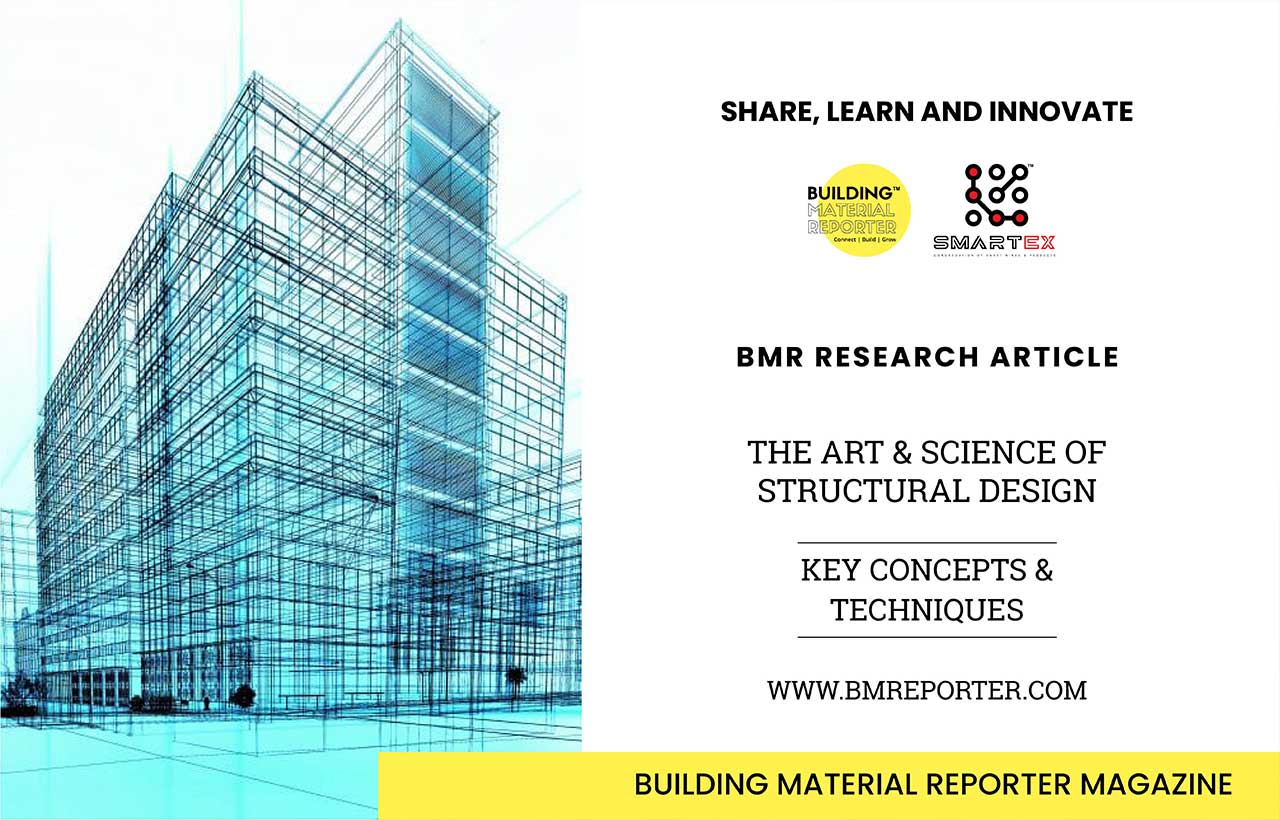 Stay updated on the latest news and insights in home decor, design, architecture, and construction materials with Building Material Reporter.
Stay updated on the latest news and insights in home decor, design, architecture, and construction materials with Building Material Reporter.
Frequently Asked Questions (FAQs)
What are the fundamental principles of structural design?
The fundamental principles of structural design are safety, strength, durability, economy, sustainability, functionality, aesthetics, and risk management.
How are advanced construction techniques integrated into structural design?
Modern structural design relies heavily on advanced building processes, which enable engineers and architects to produce structures that are more efficient, safe, and sustainable. These techniques not only improve building quality and performance, but they also contribute to shorter construction times, lower costs, and less environmental effect.
Why is structural analysis important in the design process?
Structural analysis is an important phase in the design process for any building, bridge, or infrastructure project. It entails evaluating the forces, stresses, and deformations that a structure will experience over its lifetime to ensure that it is safe, useful, and cost-effective.


